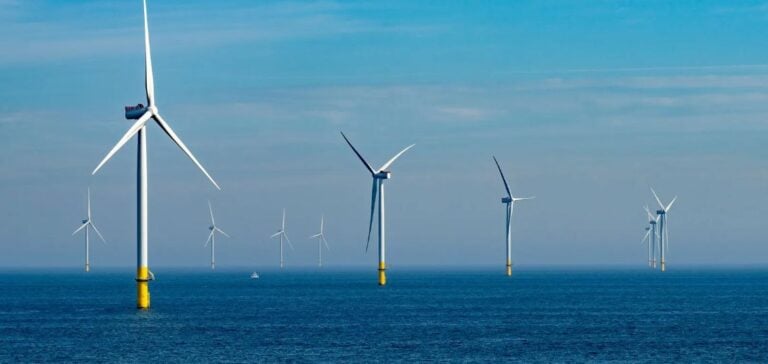The Dutch government, through Climate and Green Growth Minister Sophie Hermans, has announced a strategic project to connect the energy grids of the Netherlands and the United Kingdom. This initiative is centered on LionLink, the first hybrid interconnector designed to transport 2 gigawatts (GW) of electricity via the Nederwiek 3 offshore wind farm.
A groundbreaking hybrid interconnection model
LionLink, jointly developed by TenneT in the Netherlands and National Grid Ventures (NGV) in the UK, introduces a major innovation in interconnection technology. Unlike traditional models, this project combines renewable energy transmission with direct exchange between the two countries, meeting decarbonization and energy cooperation goals.
The installation relies on a converter platform located in the North Sea, capable of converting electricity from 66 kilovolts to 525 kilovolts direct current (DC), suitable for long-distance transmission. This concept ensures optimized use of offshore infrastructure, reducing costs and environmental impact.
Benefits for Europe and the United Kingdom
With a capacity equivalent to the electricity consumption of two million households, LionLink will enhance energy security in both countries while improving the competitiveness of electricity markets. Marco Kuijpers, Director of Large Offshore Projects at TenneT, highlighted that this hybrid interconnector will boost the integration of renewable energy and offer an effective alternative to current solutions.
The project also aligns with a broader vision of building an integrated energy network in the North Sea, a key element of Europe’s strategy to achieve its climate goals.
An ambitious timeline
The initial phases of the project, including stakeholder consultations and licensing, began in 2023. A final investment decision is expected in 2026, with commissioning planned for 2032. In parallel, discussions on electricity market coupling between the European Union and the United Kingdom will be necessary to ensure the interconnector’s efficiency.
A symbol of energy cooperation
LionLink reflects the shared ambition of the Netherlands and the United Kingdom to lead in energy transition efforts. This strategic project also underscores the importance of cross-border partnerships to address global energy and climate challenges.





















